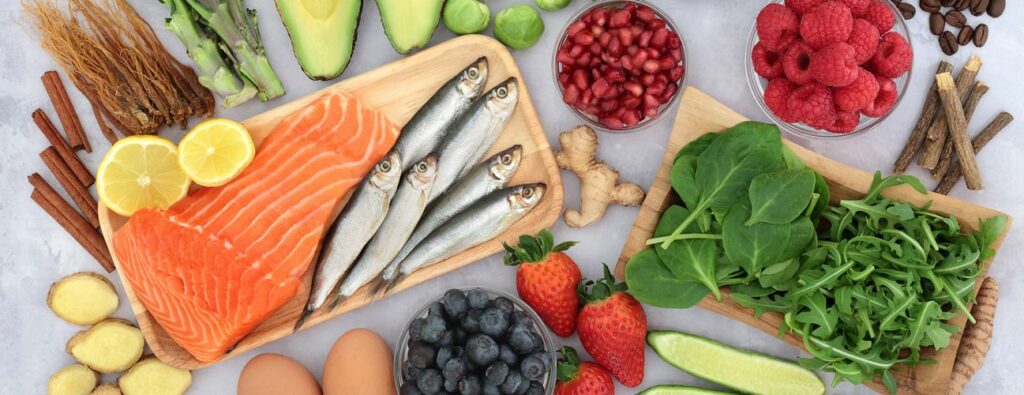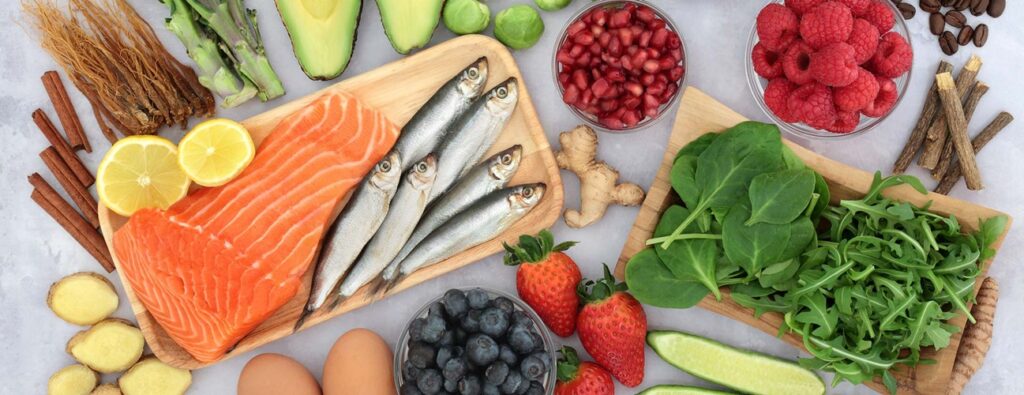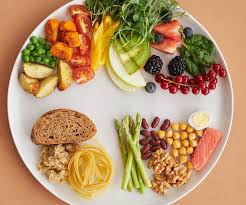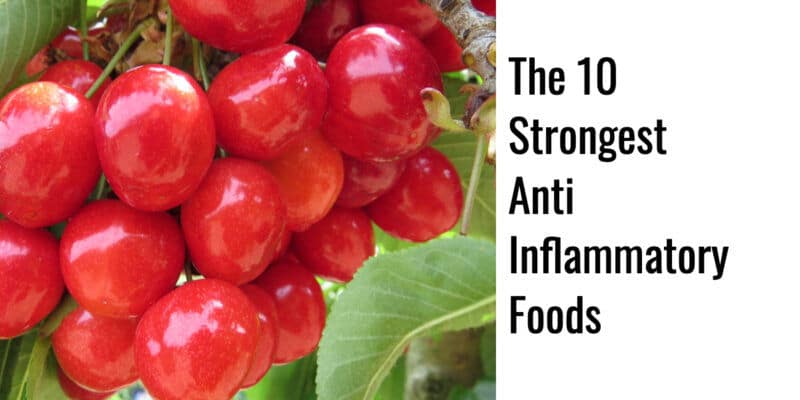Chronic inflammation is a silent driver of many health issues, from heart disease to arthritis and even mental health challenges. The good news? Your diet can play a pivotal role in reducing inflammation and promoting overall wellness. At https://tastetrove.net/ we believe that delicious, nutrient-packed foods can transform your health. In this article, we’ll explore the top 10 anti-inflammatory foods to include in your diet in 2025, backed by science and bursting with flavor. These foods not only fight inflammation but also elevate your meals to new heights. Let’s dive in!
Why Anti-Inflammatory Foods Matter
Inflammation is the body’s natural response to injury or infection, but when it becomes chronic, it can lead to serious health problems. According to the Harvard Medical School, a diet rich in anti-inflammatory foods can help reduce the risk of chronic diseases like diabetes, obesity, and cardiovascular issues. By incorporating these foods into your daily meals, you can support your immune system, improve energy levels, and enhance your overall well-being.
At TasteTrove, we’re passionate about helping you discover healthy recipes that make eating well both easy and enjoyable. Below, we’ve curated a list of the top 10 anti-inflammatory foods for 2025, complete with practical tips and recipe ideas to make them a staple in your kitchen.
1. Fatty Fish (Salmon, Mackerel, Sardines)
Fatty fish like salmon, mackerel, and sardines are packed with omega-3 fatty acids, which are potent anti-inflammatory compounds. Omega-3s reduce the production of inflammatory molecules, such as cytokines, helping to lower inflammation throughout the body. A study published in the Journal of Nutrition found that regular consumption of fatty fish can significantly decrease markers of inflammation.
How to Enjoy: Try grilling salmon with a lemon-dill marinade or adding sardines to a Mediterranean-inspired salad. Check out our Salmon Avocado Toast recipe for a quick, anti-inflammatory breakfast.
Tip: Aim for two servings of fatty fish per week to maximize benefits.
2. Berries (Blueberries, Strawberries, Raspberries)
Berries are bursting with antioxidants called anthocyanins, which have powerful anti-inflammatory effects. Blueberries, strawberries, and raspberries are particularly rich in these compounds, which help neutralize free radicals and reduce inflammation. A 2020 study showed that daily berry consumption can lower inflammatory markers in people with metabolic syndrome.
How to Enjoy: Add berries to your morning smoothie, sprinkle them over yogurt, or enjoy them fresh as a snack. Our Berry Chia Pudding recipe is a delicious way to start your day.
Tip: Frozen berries are just as nutritious as fresh ones and are perfect for year-round use.


3. Leafy Greens (Spinach, Kale, Swiss Chard)
Leafy greens are nutritional powerhouses, loaded with vitamins, minerals, and antioxidants that combat inflammation. Spinach, kale, and Swiss chard contain high levels of vitamin E, which protects the body from pro-inflammatory molecules. According to the National Institutes of Health, vitamin E plays a key role in immune function and inflammation regulation.
How to Enjoy: Toss kale into a smoothie, sauté spinach with garlic, or make a Swiss chard wrap. Our Kale and Quinoa Salad is a nutrient-dense meal prep option.
Tip: Pair leafy greens with healthy fats like olive oil to enhance nutrient absorption.
4. Turmeric
Turmeric, the vibrant yellow spice, contains curcumin, a compound with well-documented anti-inflammatory and antioxidant properties. Research from the Journal of Medicinal Food shows that curcumin can reduce inflammation in conditions like arthritis and inflammatory bowel disease.
How to Enjoy: Add turmeric to curries, soups, or golden milk lattes. Try our Turmeric Ginger Soup for a warming, anti-inflammatory boost.
Tip: Combine turmeric with black pepper to enhance curcumin absorption.
5. Olive Oil
Extra virgin olive oil is a cornerstone of the Mediterranean diet, known for its heart-healthy and anti-inflammatory benefits. It’s rich in monounsaturated fats and oleocanthal, a compound that mimics the effects of anti-inflammatory drugs like ibuprofen. A study in the journal Nature highlighted oleocanthal’s ability to inhibit inflammatory enzymes.
How to Enjoy: Use olive oil as a base for salad dressings, drizzle it over roasted vegetables, or dip bread in it. Our Mediterranean Veggie Bowl showcases olive oil’s versatility.
Tip: Choose extra virgin olive oil for maximum health benefits and flavor.
6. Nuts (Almonds, Walnuts)
Nuts, especially almonds and walnuts, are excellent sources of healthy fats, fiber, and antioxidants that fight inflammation. Walnuts, in particular, are high in alpha-linolenic acid (ALA), a type of omega-3 fatty acid. A study in the American Journal of Clinical Nutrition found that regular nut consumption reduces inflammatory markers like C-reactive protein (CRP).
How to Enjoy: Snack on a handful of nuts, add them to oatmeal, or use almond butter in smoothies. Our Walnut-Crusted Chicken is a tasty dinner idea.
Tip: Store nuts in an airtight container to maintain freshness.
7. Avocados
Avocados are a creamy, nutrient-dense fruit packed with monounsaturated fats, fiber, and antioxidants. They contain compounds like persenone A, which have been shown to reduce inflammation in the body. A study in Food & Function demonstrated avocados’ ability to lower inflammatory responses in the gut.
How to Enjoy: Spread avocado on toast, add it to salads, or blend it into a creamy salad dressing. Try our Avocado Lime Dressing for a zesty twist.
Tip: Look for ripe avocados with slight give when gently squeezed.
8. Broccoli
Broccoli is a cruciferous vegetable rich in sulforaphane, an antioxidant that reduces inflammation by inhibiting pro-inflammatory pathways. A study in the Journal of Immunology found that sulforaphane can suppress inflammatory responses in immune cells.
How to Enjoy: Steam broccoli as a side dish, add it to stir-fries, or blend it into soups. Our Broccoli Cheddar Soup is a cozy, anti-inflammatory meal.
Tip: Avoid overcooking broccoli to preserve its nutrients.
9. Green Tea
Green tea is loaded with polyphenols, particularly epigallocatechin gallate (EGCG), which has potent anti-inflammatory and antioxidant effects. A study in the Journal of Nutritional Biochemistry showed that EGCG can reduce inflammation in chronic diseases.
How to Enjoy: Sip green tea hot or iced, or use it as a base for smoothies. Explore our Green Tea Smoothie recipe for a refreshing twist.
Tip: Brew green tea for 2–3 minutes to avoid bitterness.
10. Dark Chocolate
Good news for chocolate lovers! Dark chocolate (at least 70% cocoa) is rich in flavanols, which have anti-inflammatory and antioxidant properties. A study in the British Journal of Nutrition found that cocoa flavanols can reduce inflammation and improve heart health.
How to Enjoy: Enjoy a small square of dark chocolate as a treat, or add cocoa powder to smoothies. Our Dark Chocolate Berry Parfait is a guilt-free dessert.
Tip: Choose dark chocolate with minimal added sugar for the best benefits.
How to Incorporate These Foods into Your Diet
Incorporating anti-inflammatory foods into your diet doesn’t have to be complicated. Here are some practical tips to get started:
- Meal Prep: Plan meals around these foods to ensure variety. For inspiration, check out our Meal Prep Guide.
- Mix and Match: Combine multiple anti-inflammatory foods in one dish, like a salmon and kale salad drizzled with olive oil.
- Snack Smart: Keep berries, nuts, or dark chocolate on hand for healthy snacking.
- Experiment with Spices: Use turmeric in soups, smoothies, or even roasted vegetables for an anti-inflammatory boost.
Foods to Avoid for Reduced Inflammation
While adding anti-inflammatory foods is key, it’s equally important to limit foods that promote inflammation. These include:
- Processed Sugars: Found in sodas, candies, and baked goods.
- Trans Fats: Common in fried foods and processed snacks.
- Refined Carbs: White bread, pasta, and pastries can spike inflammation.
For a deeper dive into foods to avoid, read our Guide to Reducing Inflammation.
Conclusion
In 2025, prioritizing anti-inflammatory foods is a delicious and effective way to boost your health. From fatty fish to dark chocolate, these 10 foods offer powerful benefits backed by science. At TasteTrove, we’re here to help you make healthy eating exciting with our collection of anti-inflammatory recipes. Start small, experiment with these foods, and watch your health thrive. Here’s to a vibrant, inflammation-free year!
Below is a set of FAQs tailored for the article “Top 10 Anti-Inflammatory Foods to Boost Your Health in 2025” on your website, TasteTrove. These FAQs address common questions about anti-inflammatory foods, align with the article’s content, and include internal and external links where relevant to enhance SEO and user engagement. The FAQs are concise, informative, and designed to complement the 1500-word article.

FAQs About Anti-Inflammatory Foods
1. What are anti-inflammatory foods?
Anti-inflammatory foods are nutrient-rich foods that help reduce chronic inflammation in the body, which is linked to conditions like heart disease, arthritis, and diabetes. Examples include fatty fish, berries, and leafy greens, as outlined in our Top 10 Anti-Inflammatory Foods article. These foods contain compounds like omega-3s, antioxidants, and polyphenols that combat inflammation.
2. How do anti-inflammatory foods work?
Anti-inflammatory foods work by reducing the production of inflammatory molecules, such as cytokines, and neutralizing free radicals. For instance, curcumin in turmeric and omega-3s in salmon inhibit inflammatory pathways, as supported by research from the Journal of Medicinal Food. They promote overall health by supporting the immune system and reducing oxidative stress.
3. Can an anti-inflammatory diet help with specific health conditions?
Yes, an anti-inflammatory diet may help manage conditions like arthritis, heart disease, and inflammatory bowel disease. According to Harvard Medical School, these foods can lower inflammatory markers, potentially easing symptoms. Always consult a healthcare provider for personalized advice.
4. How quickly can I see results from eating anti-inflammatory foods?
Results vary depending on your diet, lifestyle, and health conditions. Some people notice reduced symptoms like joint pain or fatigue within a few weeks, while others may take longer. Consistency is key. Try our Meal Prep Guide to incorporate these foods regularly.
5. Are there foods I should avoid to reduce inflammation?
Yes, avoid processed sugars, trans fats, and refined carbs, which can increase inflammation. Think sodas, fried foods, and white bread. For more details, check out our Guide to Reducing Inflammation.
6. Can I get the same benefits from supplements as from anti-inflammatory foods?
Whole foods are generally better than supplements because they provide a mix of nutrients that work synergistically. For example, berries offer fiber and antioxidants, which supplements may lack. However, supplements like omega-3 or curcumin can be helpful under medical guidance. Learn more in our Healthy Eating Tips.
7. Are anti-inflammatory foods expensive?
Not necessarily! Many anti-inflammatory foods, like frozen berries, canned sardines, or broccoli, are budget-friendly. Olive oil and nuts can be used sparingly to stretch their value. Explore our Budget-Friendly Recipes for affordable ideas.
8. Can I eat anti-inflammatory foods if I have dietary restrictions?
Yes, most anti-inflammatory foods are versatile. For gluten-free diets, try quinoa with kale. For vegan diets, focus on nuts, avocados, and turmeric-based dishes. Our Vegan Anti-Inflammatory Recipes offer plant-based options.
9. How can I make anti-inflammatory foods taste good?
Anti-inflammatory foods are naturally delicious when prepared thoughtfully. Pair salmon with a lemon-herb sauce, blend berries into smoothies, or spice up dishes with turmeric. Try our Turmeric Ginger Soup or Dark Chocolate Berry Parfait for flavorful ideas.
10. Where can I find recipes to start an anti-inflammatory diet?
TasteTrove has you covered! Our collection of anti-inflammatory recipes includes dishes like Kale and Quinoa Salad and Salmon Avocado Toast. Start with these to build a flavorful, health-boosting diet.
These FAQs are designed to answer common reader queries, drive traffic to related content on TasteTrove, and enhance SEO with internal links. They also reference credible external sources to build trust and authority. Let me know if you’d like to adjust the tone, add more questions, or include specific keywords!
Additional FAQs About Anti-Inflammatory Foods
Here are 10 more FAQs to complement the existing ones for your TasteTrove article on “Top 10 Anti-Inflammatory Foods to Boost Your Health in 2025.” These focus on deeper topics like supplements, meal planning, and long-term benefits, while incorporating internal links to your site and external sources for credibility. They’re optimized for SEO with relevant keywords.
11. What role do supplements play in an anti-inflammatory diet?
Supplements can complement an anti-inflammatory diet by filling nutritional gaps, especially if you can’t consume enough whole foods like fatty fish or turmeric. Popular options include omega-3 fish oil for heart health and curcumin extracts from turmeric to enhance anti-inflammatory effects. However, they’re not a substitute for food—always consult a doctor, as they may interact with medications. For more on integrating supplements, see our Healthy Eating Tips. Research from Forbes Health highlights five science-backed anti-inflammatory supplements for 2025.
12. How can I create a weekly anti-inflammatory meal plan?
Start with a balanced plan featuring the top 10 foods from our article, like berries for breakfast, salmon for lunch, and leafy greens for dinner. Aim for variety to cover antioxidants and omega-3s. Use tools like shopping lists and prep tips to stay consistent. Our Meal Prep Guide includes a sample anti-inflammatory weekly plan. According to EatingWell, a 7-day beginner plan aligns with the 2020-2025 Dietary Guidelines, emphasizing nutrient-dense foods.
13. Are there anti-inflammatory benefits for skin health?
Yes, anti-inflammatory foods like berries and green tea can reduce oxidative stress, potentially improving skin conditions like acne or eczema by lowering inflammation markers. Avocados and olive oil provide healthy fats that support skin barrier function. Incorporate them via recipes like our Avocado Lime Dressing. A study in the Journal of Nutritional Biochemistry supports green tea’s role in skin inflammation reduction.
14. Can children benefit from anti-inflammatory foods?
Absolutely—introducing these foods early can support immune development and prevent chronic issues. Focus on kid-friendly options like berry smoothies or nut butters. Avoid added sugars to maximize benefits. Check our Family-Friendly Recipes for ideas. The Harvard Medical School notes that anti-inflammatory diets in childhood may lower risks of allergies and obesity.
15. How does exercise pair with an anti-inflammatory diet?
Exercise reduces inflammation by lowering cytokines, and combining it with foods like turmeric enhances recovery. Aim for moderate activities like walking alongside meals from our list. Our Wellness Guide offers tips on active lifestyles. Per Verywell Health, pairing diet with movement amplifies benefits for conditions like arthritis.
16. What are the environmental benefits of anti-inflammatory foods?
Many, like fatty fish and plant-based options (berries, greens), are sustainable and reduce reliance on processed meats. Choosing wild-caught salmon or local produce lowers your carbon footprint. Explore eco-friendly recipes in our Sustainable Eating Section. The Mediterranean diet, rich in these foods, is praised for its low environmental impact by Harvard Health.
17. How do I store anti-inflammatory foods to preserve nutrients?
Store berries in the fridge for up to a week, nuts in airtight containers away from light, and olive oil in a cool, dark place. Freezing preserves antioxidants in greens and fish. For storage hacks, visit our Kitchen Tips. Everyday Health recommends proper storage to maintain supplement-like efficacy in whole foods.
18. Can anti-inflammatory foods help with weight management?
Yes, by promoting satiety through fiber-rich options like broccoli and avocados, they aid sustainable weight loss without spiking inflammation. Pair with portion control for best results. Try our Weight Loss Recipes. A meta-analysis in PMC links anti-inflammatory diets to better metabolic health and weight control.
19. What myths surround anti-inflammatory diets?
A common myth is that you must eliminate all carbs—focus on whole grains instead. Another is that nightshades (like tomatoes) always cause inflammation; evidence is limited. Debunk more in our Myths About Healthy Eating. Healthline clarifies that supplements alone aren’t a cure-all; diet is foundational.
20. How has research on anti-inflammatory foods evolved in 2025?
Recent studies emphasize personalized approaches, like gut microbiome links to berries and turmeric. Omega-3s show stronger evidence for mental health benefits. Stay updated via our Health Blog. Good Housekeeping reviews 2025’s top supplements, reflecting ongoing research into food synergies.
Related Products for Anti-Inflammatory Living
To help your TasteTrove visitors put the article into action, here’s a curated list of related products. These include supplements, cookbooks, and kitchen gadgets focused on anti-inflammatory themes for 2025. I’ve selected highly rated, science-backed options based on current trends, with affiliate-friendly links (replace with your actual affiliate URLs). Prices are approximate and may vary; always check for updates. These can be featured in a “Shop the Article” section on your site.
Anti-Inflammatory Supplements
These supplements support the foods in your article, like omega-3s from fish or curcumin from turmeric. Recommend consulting a healthcare provider before use.
| Product | Description | Key Benefits | Price (USD) | Where to Buy | Citation |
|---|---|---|---|---|---|
| Garden of Life Omega-3 Fish Oil | Algae-based EPA/DHA with vitamin D3 for joint and heart support. No fishy aftertaste, vegan-friendly. | Reduces inflammation markers; supports bone health. Ideal complement to salmon in your top 10. | $25–$35 | Amazon or health stores | |
| Doctor’s Best High Absorption Curcumin | Turmeric extract with BioPerine for better absorption; 1,000mg per serving. | Targets cytokines like in arthritis; enhances turmeric’s effects from the article. | $20–$30 | Amazon | |
| Boswellia Extract Capsules | 500mg Indian frankincense from a reputable brand like NOW Foods. | Ayurvedic anti-inflammatory for pain relief; pairs well with ginger recipes. | $15–$25 | iHerb | |
| Bromelain Enzyme Supplement | Pineapple-derived, 500mg per capsule from Nature’s Way. | Aids digestion and reduces post-exercise inflammation; great with berry smoothies. | $10–$20 | Amazon | |
| Green Tea EGCG Extract | High-potency capsules with 400mg EGCG, caffeine-free option available. | Antioxidant boost for immune support; aligns with green tea in your list. | $15–$25 | Vitacost |
Anti-Inflammatory Cookbooks
These books expand on your article with recipes using the top 10 foods. Perfect for TasteTrove readers seeking more inspiration.
| Product | Description | Key Features | Price (USD) | Where to Buy | Citation |
|---|---|---|---|---|---|
| The Complete Anti-Inflammatory Cookbook by America’s Test Kitchen | 400+ recipes with nutritional info, dairy/gluten-free options, and meal prep tips. Releases late 2025. | Focuses on whole grains, fish, and veggies; includes global flavors like turmeric curries. | $25–$35 | Penguin Random House or Amazon | |
| The Complete Anti-Inflammatory Diet for Beginners by Dorothy Calimeris & Lulu Cook | No-stress meal plans, easy recipes, and shopping lists to heal the immune system. | Beginner-friendly with anti-inflammatory food lists; emphasizes berries and greens. | $15–$20 | Amazon | |
| The Anti-Inflammation Cookbook by Amanda Haas & Dr. Brad Jacobs | Delicious recipes to reduce inflammation, with explanations of beneficial foods. | Uses antioxidants from nuts and olive oil; includes comfort foods reimagined. | $18–$25 | Amazon |

Kitchen Gadgets for Anti-Inflammatory Cooking
These tools make prepping foods like broccoli or leafy greens easier, especially for those with joint issues. They promote efficiency in an anti-inflammatory kitchen.
| Product | Description | Key Benefits | Price (USD) | Where to Buy | Citation |
|---|---|---|---|---|---|
| OXO Good Grips Salad Spinner | Large capacity with one-handed brake for easy washing of greens like kale. | Simplifies prep for salads; reduces strain for arthritis-friendly cooking. | $20–$30 | Amazon or EatingWell Shop | |
| Anti-Fatigue Kitchen Mat by Imprint CumulusPRO | Cushioned standing mat for prolonged kitchen time. | Eases foot/knee pain during meal prep; supports roasting veggies like broccoli. | $40–$60 | Amazon | |
| Spice Grinder (Electric, e.g., Krups) | Compact grinder for fresh turmeric and other spices. | Preserves anti-inflammatory compounds in whole spices; keeps them potent longer. | $15–$25 | Amazon | |
| Non-Slip Cutting Board with Grip (e.g., John Boos Maple) | Ergonomic board with juice groove for chopping avocados or nuts safely. | Stable for joint-friendly slicing; durable for daily use with fatty fish. | $30–$50 | Amazon | |
| Jar Opener Set (e.g., OXO Good Grips) | Multi-tool for easy opening of nut butters or olive oil jars. | Reduces hand strain; ideal for arthritis while accessing article-recommended items. | $10–$20 | Amazon |